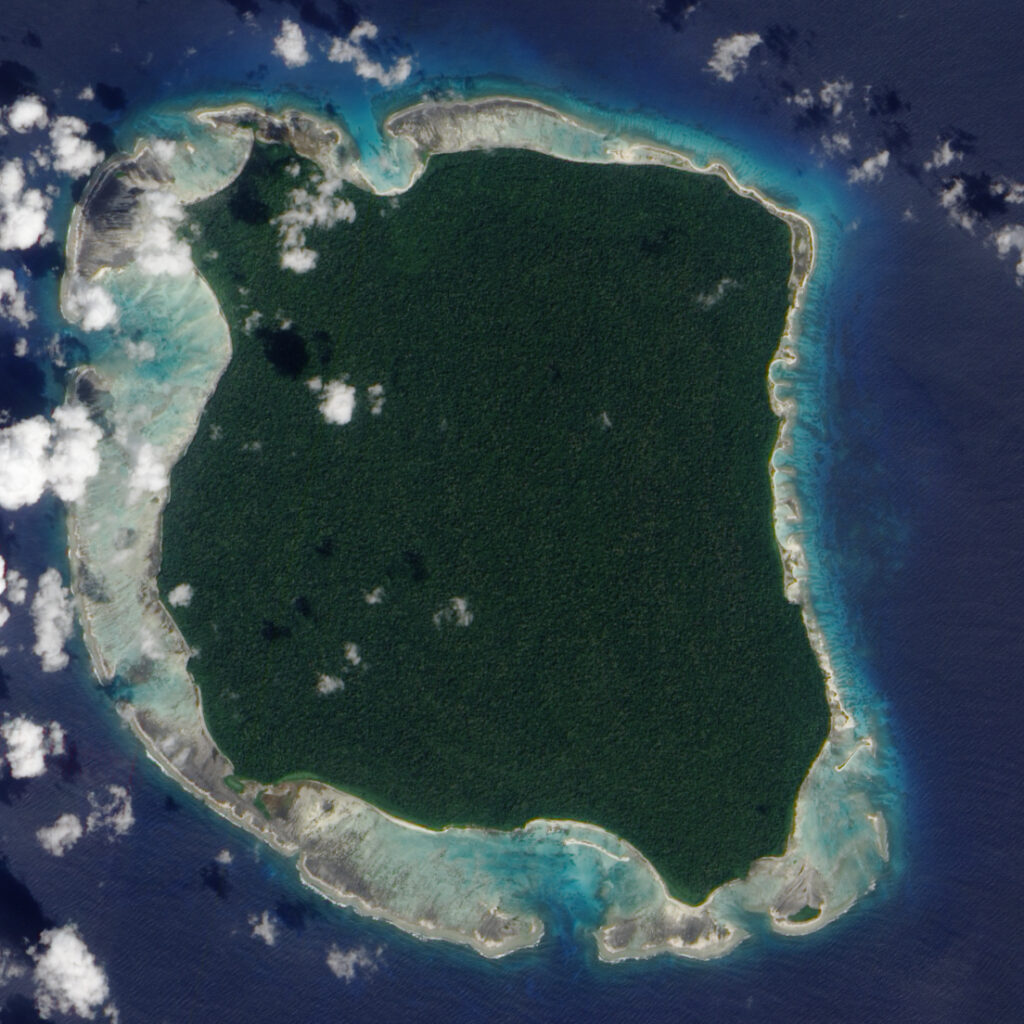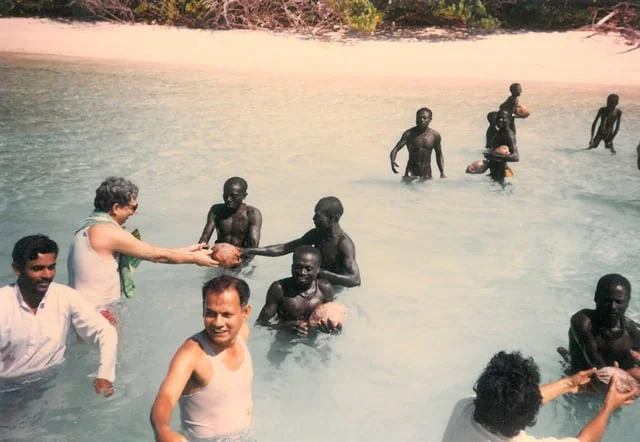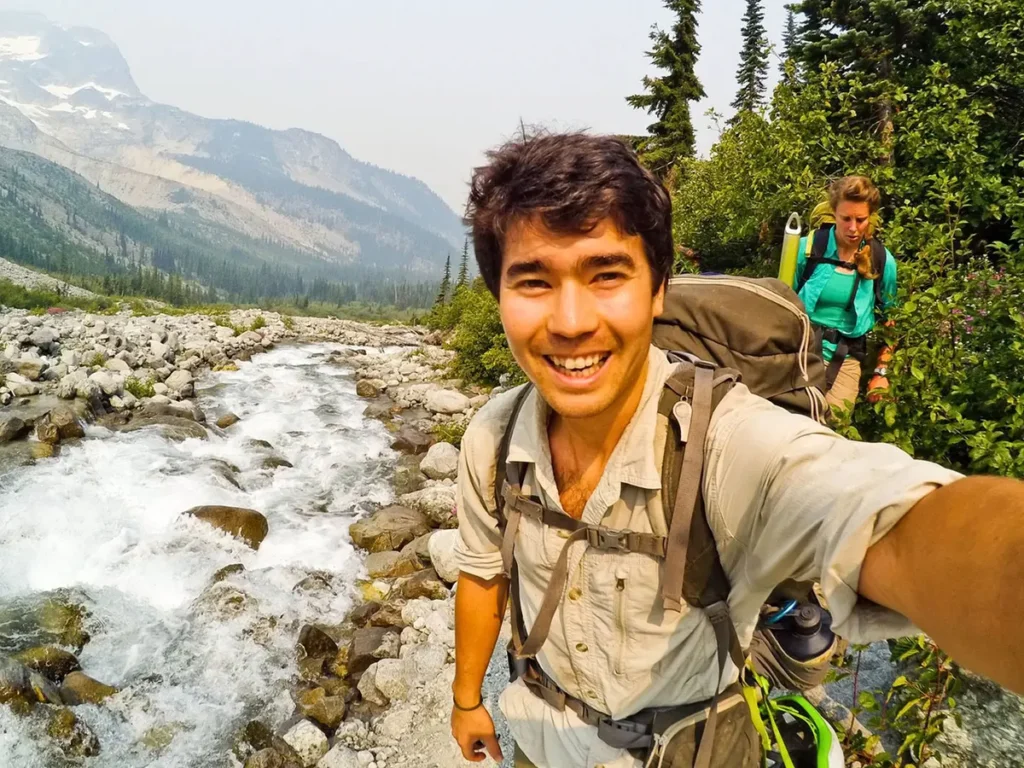Late in 2018, an American Christian missionary lost his life on North Sentinel Island. Before that, in 2006, two Indian crab fishermen perished while illegally fishing for crab off of the same island.
Who are the inhabitants of the mysterious North Sentinel Island? And what is it about this uncontacted tribe that has drawn people to it, despite the danger, for hundreds of years?


Here, we will go over the history of North Sentinel Island, its inhabitants, and the many attempts to contact the Sentinelese.
The History Of North Sentinel Island
North Sentinel Island is located in the Bay of Bengal. It is one of the Andaman and Nicobar Islands, many of which are also occupied. It’s a small land mass, only 8 kilometers long and 7 kilometers wide.
The people that inhabit North Sentinel Island are known as the Sentinelese. They were first observed in 1771 when an East India Company survey vessel spotted their fires on the shore.
The first human-to-human contact on North Sentinel Island occurred when, in October 1867, a small ship called Nineveh crashed on the reef near the shoreline. The crew all survived but were stranded and made their way to the shore of the forbidden island.
Everything was peaceful for the first few days, but on the morning of the third day, the crew of the Nineveh was attacked by a group of North Sentinelese warriors.
A small-scale battle ensued, with the crew managing to fight the Sentinelese off with sticks and stones. This feat was even more impressive, considering the Sentinelese were armed with iron-tipped arrows.
The crew of the Nineveh was eventually rescued by the Royal Navy, but the incident at North Sentinel Island sparked curiosity. In 1880, an officer of the Royal Navy led a small group of armed men to the island to investigate.
Once there, six Sentinelese were captured–two elderly tribe members and four children. Like many other instances of Europeans coming into contact with uncontacted peoples, illness quickly set in.
The two elderly Sentinelese soon perished from the undescribed illness, and the children were sent back to North Sentinel Island before their illnesses could progress.
To try and smooth over the mistake, the children were sent home with a massive amount of gifts for the island inhabitants.
T.N. Pandit And The First Anthropological Study Of North Sentinel Island
In 1971, the first true anthropological study of North Sentinel Island was finally conducted.
The survey was led by Triloknath Pandit, also known as T.N. Pandit, an Indian anthropologist. While his first expedition in 1967 wasn’t the success he wanted it to be, North Sentinel Island and establishing friendly contact with the Sentinelese would become his life’s work.

When he set out for his first survey, Pandit was accompanied by 20 other people–a mix of government officials, scientists, and even a few members of the Onge tribe.
The Onge were inhabitants of other nearby Andamanese islands, and it was hoped that they would be able to communicate with the Sentinelese.
Upon their arrival, Pandit and his team spotted groups of Sentinelese people on the shore through binoculars. But as they grew closer, the Sentinelese fled into the forest before the anthropologists could make landfall.
Pandit and his team were able to gather valuable information about the tribe even without making person-to-person contact.
After they made landfall, they were able to find fires that were still hot, evidence of hunting, weapons like spears, bows, and arrows, and lean-to homes. They were also able to determine that the Sentinelese were working with metal for their weapons and other tools.
T.N. Pandit would return several other times, including with a National Geographic crew, throughout the years. Some excursions would be somewhat successful, while at other times, Pandit and his teams would face volleys of arrows from the distrusting Sentinelese.
Other Incidents At North Sentinel Island: The MV Primrose
Later, in 1981, accidental contact with the residents of North Sentinel Island would occur.
The MV Primrose, a cargo ship, found itself caught in rough waters around North Sentinel Island and ran aground. Like the Nineveh before, the Primrose would have a few peaceful days before the Sentinelese attacked.
The captain of the Primrose spotted trouble in the distance–a large group of armed Sentinelese boarding canoes preparing to attack the Primrose. A distress call was sent up, but it took almost a week for them to finally be rescued.
Lucky for the Primrose crew, rough waters prevented the Sentinelese from reaching them, and no one was harmed. Once they had been evacuated, the Sentintlese would salvage metal from the ship to make tools and weapons.
Unintentional contact would occur a few other times concerning the Primrose.
Scrappers who were contracted through the Indian government would run into the Sentinelese while they worked. They would occasionally trade pieces of the salvaged ship for fruit with the scrap crews.
North Sentinel Island’s First Friendly Encounter With The Outside World
Despite the progress made by T.N Pandit, no true friendly contact had yet been made with the North Sentinelese by 1991. But that was about to change.
The secret weapon would be a woman’s touch.
On January 4 of that year, anthropologist Madhumala Chattopadhyay and a team of 13 other researchers, scientists, and support crew approached the uncontacted tribe. They made their approach by boat and floated coconuts over as peace offerings.
To their shock, the Sentinelese accepted their coconut gifts–not just once, but multiple times. The only difference was that the leader of this expedition was Madhumala, the first woman anthropologist to ever visit the island.
It’s thought that the sight of Madhumala was a sign to the Sentinelese that the research expedition meant no harm.
The pictures of the Sentinelese trading with Madhumala and her team would drastically alter the world’s perspective of the Sentinelese.
Before, they had simply been thought of as violent and aggressive. Those photos humanized them and brought a wave of empathy for the islanders.
However, that violent stereotype would return in full force with the passing of John Allen Chau.
Why Is North Sentinel Island Dangerous?
While there may have been headway in establishing friendly contact with the North Sentinelese, the peace couldn’t last. The people of North Sentinel Island are some of the last uncontacted people on the planet Earth, and they planned on keeping it that way.
The hostility started to simmer once more with the death of crab fishermen Sunder Raj and Pandit Tiwari in 2006. When their small vessel was stranded in the shallows around the island, the two men were fatally attacked by the Sentinelese.
The Death Of John Allen Chau
John Allen Chau was only 26 when he felt the calling to try and convert what he considered to be the people of “Satan’s last stronghold”–North Sentinel Island.

Full of bright, burning faith and misguided confidence, Chau paid two Indian fishermen to take him to the island in November of 2018.
The Sentinelese regarded the Bible-wielding missionary with humor at first, but the humor quickly shifted to anger. After a few initial attempts at contact, Chau pushed the islanders too hard, and he was killed with bows and arrows.
News of his death swept across the world. There was mourning, of course, but also frustration that someone was even allowed to get so close to North Sentinel Island. After all, approaching the island had been banned for years.
Why Is North Sentinel Island Prohibited?
Even if John Allen Chau hadn’t been killed by the Sentinelese, his attempted mission trip would have likely landed him in jail.
This is because it has been illegal to visit North Sentinel Island since 1956 when the Andaman and Nicobar Protection of Aboriginal Tribes Regulation went into effect.
This regulation protected not only the North Sentinelese but also other tribes in the Andaman and Nicobar Islands.
This regulation serves several purposes. Most importantly, it keeps these uncontacted tribes and protects them from contracting illnesses from visitors to the island. It also helps to preserve their unique culture and keep them safe.
The regulation also prevents unprepared people, like John Allen Chau, from approaching the island and getting injured or even killed in the process. To keep people away, the Indian government provides a series of armed patrol boats around the island at all times.
Indian anthropologists have decided on a “hands off, eyes on” approach to researching the Sentinelese. This helps them learn more about their lives with the least amount of disturbance possible.
How Many Sentinelese Are Left?
Now that North Sentinel Island and its residents are left mostly in peace, it’s difficult for anthropologists to get an accurate count of how many Sentinelese are left.
It is believed that the island could support as many as 500 people. As of 2024, researchers believe that between 50 and 200 Sentinelese make up the population of North Sentinel Island.
With India having announced that they have no intention of allowing anyone to contact the North Sentinelese again, the tribe may go uncontacted for the rest of their existence.
While there will always be a fierce curiosity regarding one of the world’s last uncontacted tribes, time and time again, the Sentinelese have proved they’d much rather be left alone.
Finally, we might be ready to give them the solitude they want.
Sources
https://www.bbc.com/news/world-asia-india-46350130
https://northsentinelisland.com/north-sentinel-history
https://www.thehindu.com/society/hands-off-eyes-on-the-sentinelese-m-sasikumar/article33757682.ece
https://www.nationalgeographic.com/culture/article/north-sentinel-islanders-live-in-isolation












Leave a comment